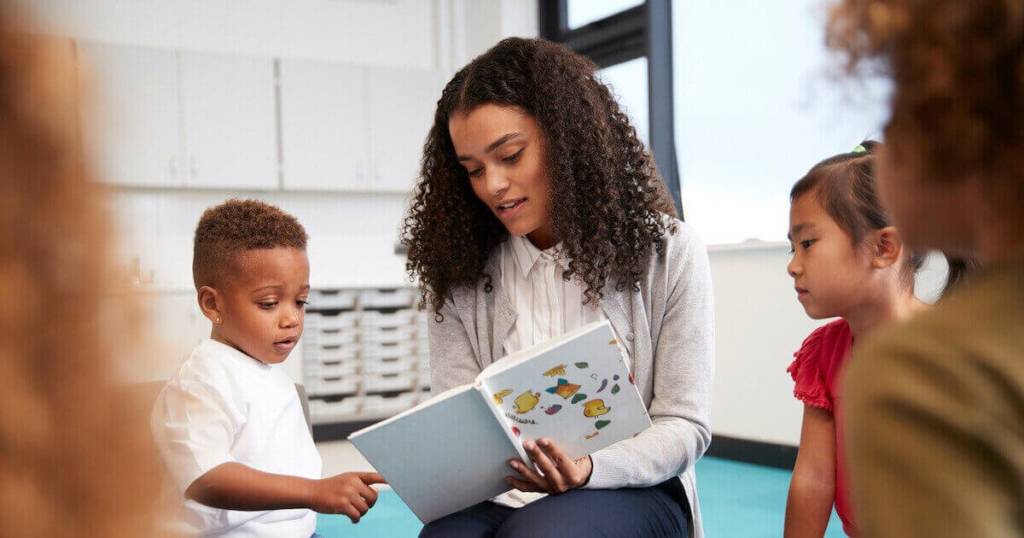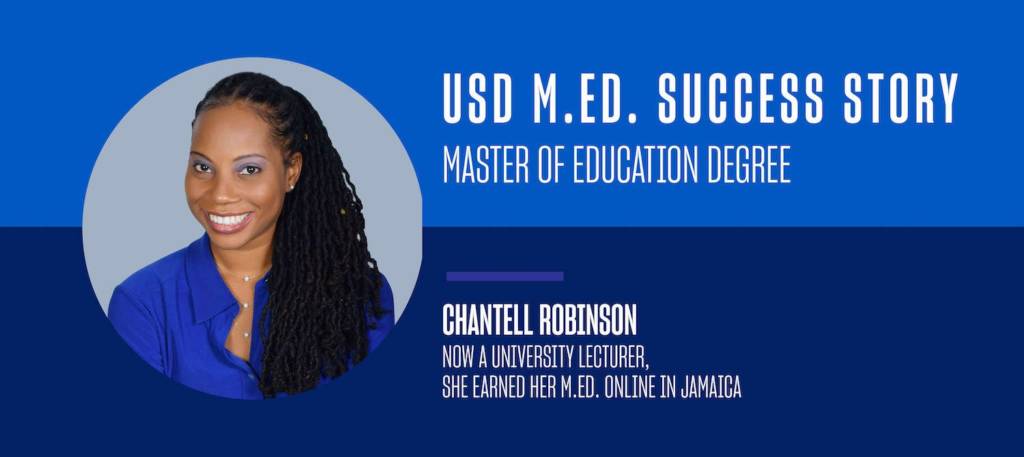What Is Bilingual Education?
Bilingual education is the delivery of academic material in two languages, one of which is usually the students’ native language. Students of all ages enroll in schools and learning environments where the primary language is different from their native language; in order to keep these students on the same academic timeline as their peers, schools may offer a bilingual education program that makes course content more accessible while students learn a new language.
Most bilingual or dual language education in the United States is delivered in Spanish and English, but Mandarin Chinese, French, German and Vietnamese dual language programs are gaining traction. The U.S. has never declared an official language, but since 78.5 percent of the population speaks English at home, it is considered the unofficial “native” tongue. As such, most bilingual education programs in the U.S. focus on helping students develop proficiency in English. This is why bilingual students in America are often referred to as English Language Learners (ELL), or simply English Learners (EL).
There are several different types of bilingual education programs, the format of which varies depending on the end goal.
How Does Bilingual Education Work?
Bilingual education programs were first introduced in the U.S. in the mid-17th century, as a way to help Polish immigrants assimilate to the American manufacturing industry. Today, dual language programs are predominantly used for a similar purpose, though the goals have expanded to helping non-English speakers excel academically and even teaching native English speakers a new language.
In grade schools, bilingual education programs incorporate both the students’ native language (the partner language) and English in varying proportions:
50/50: English and the partner language are used equally throughout the class, schoolday, semester or program length. This model is common for children at the elementary school level, beginning in kindergarten or first grade and potentially continuing into middle and high school if needed. Most children who enter 50/50 bilingual programs before 7 years of age are much more likely to become proficient in the new language than older students, if enrolled in the program consistently.
90/10: This format is used by both non-English speakers and native English-speaking students to learn a new language. Eighty to 90 percent of the course content is delivered either in English or the partner language, with some classes offered entirely in the partner language.
100 percent immersion: Second language immersion programs use a partner language (typically not English) for all communications, both in and outside the classroom.
Dual language programs are often found in U.S. schools located in neighborhoods with large immigrant or non-English speaking populations, while immersion programs are typically found in schools with a majority English-speaking student body.
Types of Bilingual Education
Bilingual education programs differ according to the ultimate goal. Do students need to become proficient in English to communicate with their teachers and peers, or do they wish to learn a new language for academic enrichment or expanded career opportunities? Do they want to maintain fluency in both their native language and English? There are programs available for all of these language learners.
See the chart below for a breakdown of the different types of bilingual education programs, using English and Spanish as example languages. Also included are immersion and heritage language programs, which provide slightly different opportunities for academic and cultural enrichment.
| Goal | Instruction | |
| Dual Language Two-Way (Maintenance or developmental) | Designed to help English learners attain full proficiency (including grade-level literacy skills) in Spanish and English to participate equitably in school. Students may maintain bilinguality for their entire school career. | Students of limited English proficiency are integrated with students proficient in English. Teachers certified in bilingual education deliver instruction in literacy and academic content in both Spanish and English for the duration of the program. |
| Dual Language One-Way | Designed to help students of limited English proficiency develop fluency and literacy in English. Students will transfer to English-only instruction between six and seven years after they enroll in school. | Teachers certified in bilingual education deliver instruction in literacy and academic content in both Spanish and English, transitioning to English-only instruction when students have achieved proficiency. |
| Transitional Bilingual Late Exit | Designed to transfer students of limited English proficiency to English-only instruction between six and seven years after the student enrolls in school. | Teachers certified in bilingual education deliver part or all of their instruction in Spanish when the students enter school. As the child acquires English, the amount of instruction provided in Spanish decreases until full proficiency in English is attained. |
| Transitional Bilingual Early Exit | English learners utilize Spanish as a resource while acquiring full proficiency in English to participate equitably in school. The goal is to transition students into English-only classrooms as quickly as possible, usually between two and five years after the student enrolls in school. | |
| Immersion One-Way | Primarily for native English speakers to become proficient or fluent in Spanish. | Instructors deliver all course content in Spanish. If the immersion is a school- or grade-wide program, students may be asked to conduct all non-academic communications in Spanish as well. |
| Heritage Two-Way (Maintenance or developmental) | Intended for students who primarily speak English but whose relatives speak Spanish. Students and/or their guardians may wish to improve their communication and enhance their connection to their cultural heritage. | Instructors may deliver course content partially or entirely in Spanish, using English only as a resource when students need help understanding. |
As you can see, bilingual education can be classified in multiple ways; for example, a student can be enrolled in a dual language, one-way, transitional, early exit program.
The Importance of Bilingual Education
Above all, bilingual education affords all students the opportunity to earn an education, no matter what language they speak. Being able to access their native language for support ensures that non-English speakers can progress academically alongside their English-speaking peers.
In addition to educational equity, dual language programs can foster:
- Multilingualism and multiliteracy
- More effective communication skills
- Enhanced awareness of linguistic and cultural diversity
- Greater connection to a community of peers
- Higher levels of academic achievement
- Increased cognitive function
- Broader cultural representation and equity in schools
- Diverse opportunities for students to thrive in a global job market
- Greater cultural empathy
- An expanded sense of cultural identity
Benefits of Bilingual Teachers In Schools
The best way to support bilingual learners is to have bilingual teachers in schools, especially schools in areas with high populations of non-English speakers. When teachers can be a resource to learners in multiple languages, they may observe the following in their students:
- Improved academic performance
- Better communication skills
- Increased ability to think creatively, recognize patterns and solve problems
- Enhanced linguistic and cultural awareness
- Greater ability to apply fundamental concepts to novel situations
- Improved social skills
- Greater confidence, self esteem and a more positive outlook
When a bilingual student successfully graduates with proficiency or fluency in English, they may have access to a greater range of job opportunities in the U.S. and beyond.
Bilingual Education Careers
Students who benefit from dual language education programs may find that they wish to become bilingual educators themselves. Fortunately, bilingual or multilingual teachers are in high demand, as learning environments across the country become increasingly more multicultural and inclusive. Now more than ever, American students need teachers who can teach the whole child, addressing not only their academic needs but their social, emotional and cultural needs.
Since demand is high, there are often financial benefits to becoming a bilingual teacher. According to Zippia, the average annual salary for a bilingual teacher is $51,770, while the average starting salary for a teacher in the U.S. is $41,955. Some schools will even offer stipends or bonuses to teachers who can add bilingual instruction to their educator skill set.
Possible careers for bilingual teachers who have earned a Bachelor’s degree or Master of Education include*:
- English as a second language (ESL) teacher
- Job description: Instructs non-native English speakers in the fundamentals of the English language.
- Salary: $52,701
- Bilingual teaching assistant
- Job description: Serves as a classroom aid to students whose native language is not English, relaying course content and instructions if and when the student lacks understanding due to a language barrier.
- Salary: $36,519
- Foreign language teacher
- Job description: Teaches a new language to students primarily for academic enrichment purposes.
- Salary: $53,918
- Bilingual education coordinator
- Job description: Designs educational curriculums, introduces improvements to teaching methods, develops educational programs and events and/or coordinates educational services for multilingual students.
- Salary: $49,139
- Bilingual curriculum designer
- Job description: Develops educational programs and curricula that accounts for students who currently or will speak multiple languages.
- Salary: $54,176
- Bilingual paraeducator
- Job description: Serves as additional classroom support to multilingual students with special needs, including academic, physical, personal and social-emotional needs.
- Salary: $31,394
- Bilingual teaching in a specialized area or concentration (i.e. Bilingual literature)
- Job description: Provides instruction in a specialized subject in multiple languages. Requires in-depth knowledge of the applicable subject, in addition to bilingual fluency.
- Salary: $41,000–$64,000+
Of course, most of these professions exist without a bilingual element, but employers will often advertise open positions with an explicit bilingual requirement.
*All salaries are national averages generated by Zippia.com as of November 2022.
How to Become a Bilingual Educator
If you are not already bilingual, start learning and practicing as soon as you can, even if you don’t yet have the proper degree qualifications to become a licensed teacher.
To become any kind of educator in a public school, you will need a master’s degree or, at the very least, a Bachelor’s degree, preferably in education. A degree in a second language is also ideal preparation. You will also need to become licensed to teach (at least in public schools) in your preferred state, and possibly hold a certification in teaching in a second language. In certain cases, such as in high-need areas or amid teacher shortages, there are alternative routes to teaching certification that don’t require a bachelor’s or master’s degree in education.
If you are ready to earn your master’s degree, you’ll need to decide which type of education degree will help you achieve your goals. A Master of Education (MEd) is typically designed for current educators to expand their pedagogical skill sets in and beyond the classroom, such as in school leadership or curriculum design. A Master of Arts (MA) provides new or aspiring teachers with practical skills they can use in the classroom. Both degrees offer specializations, including some with ESL instruction, and both can incorporate a field work element. For this component, aspiring bilingual educators can request placement in a school with a high population of non-native English speakers or a robust dual language program.
Once you earn your degree, become licensed to teach (if you are not already) and start your job search, be sure to include bilingual proficiency and instruction on your teaching resume. As previously stated, bilingual professionals are in high demand in nearly all industries, so highlighting this skill set will catch any potential employer’s eye.
As you explore teaching opportunities, be sure to take advantage of professional organizations and networks that support bilingual educators:
- National Association for Bilingual Education (NABE): A non-profit membership organization dedicated to pursuing educational equity and academic excellence for bilingual/multilingual students. NABE works to influence, support and create policies, programs, research, pedagogy and professional development that serves both multilingual students and bilingual/dual language education professionals.
- TESOL (formerly Teachers of English to Speakers of Other Languages): The largest international association of professionals dedicated to advancing the quality of ESL education. Before non-native English speakers can teach English, they must earn their TESOL certificate.
The most valuable resource for entering bilingual education is other educators! Find fellow professionals who work in a bilingual setting and ask them how they got to where they are. You may also wish to connect with faculty at a university that offers education degrees to determine the right path forward.
Ready to take that step? Download the free guide below to see why an MEd might be the ideal move.




